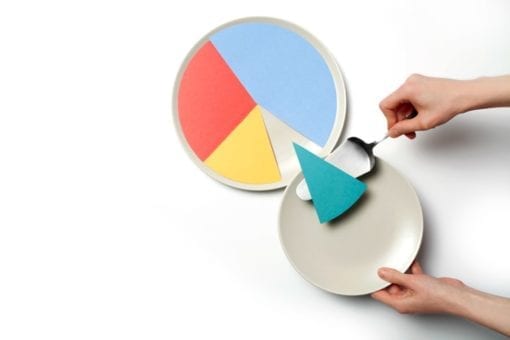Macy’s took a serious misstep when it decided to sell a Pourtions™ plate in its Herald Square store. The plate had three circles of increasing size. The smallest was labeled “Skinny Jeans,” the next largest was labeled “Favorite Jeans,” and the biggest was labeled “Mom Jeans.” Alie Ward noticed the plates and posted a pic on Twitter, which went viral. Soon, the store promised to pull the plates from its shelves.
Pourtions™ is still offering the plates for sale to retailers, though. A plate may not seem like a big deal, but the message it sends is misguided and harmful. Here are a few of the issues with the plate’s message:
“Skinny Jeans” Are a Style, Not a Size
I think the term “skinny jeans” is terrible, but I’m not in charge of fashion (and rightly so). The term “skinny jeans” does not refer to a size. It refers to a style of jeans, like bootcut jeans or low-rise jeans. Skinny jeans are cut to closely follow the lines of the body. According to Stitch Fix, there’s no tapering or flare in the leg.
Skinny jeans are available in all sizes, including plus-sizes, and people of all sizes like this particular cut. Implying that you need to be “skinny” to wear skinny jeans is inherently body-shaming and untrue.
There’s Nothing Wrong With “Mom Jeans” or Having a “Mom” Body
By labeling the largest circle as “mom jeans,” these plates send a message that there’s something wrong with mom jeans. Mom jeans are just high-waisted, stretchy, comfortable jeans, according to Today. That’s it. It’s just a style, and, like skinny jeans, mom jeans are available in a variety of sizes.
The plates are sending another message though. It’s implied that people who were “mom jeans” eat more and are larger than those who wear other styles. It associates the term “mom” with larger portions.
Pregnancy and childbirth bring dramatic changes to someone’s body. Our society expects people to “bounce back” almost immediately after childbirth. There’s a message that you should “get your body back,” as if your body has somehow gone away. Pregnancy is especially challenging for people with eating disorders, and eating disorders can develop as a response to the rapid and disconcerting changes that happen during pregnancy.
There is nothing wrong with having a “mom” body. Our bodies change. It’s natural, it’s normal, and it’s okay.
The “Portions” Are Ridiculous
Setting up these circles in different sizes also implies that there is a direct relationship between how much you eat and the size of your body. That simply isn’t true. Every body is different. Everyone’s metabolism is different. Dieting actually slows your metabolism and teaches you to ignore your natural hunger cues.
The “skinny jeans” portion on the plate is ridiculously small. It’s about the circumference of a drinking cup. That’s just not enough food. To imply, even in a “funny” way, that that’s the amount someone should eat is ridiculous. Really, the only person who should be telling you how much to eat is you.
Intuitive Eating Offers a Better Way
I get that these plates are meant to be a light-hearted joke. They speak to a larger issue, though, and that is the control we are expected to wield over our food. People who identify as women are expected to constantly monitor our food intake and make ourselves as small as possible. This kind of control isn’t realistic and can lead to disordered eating.
An alternative approach to portion control is intuitive eating. Intuitive eating is the opposite of everything we’ve been taught about how to eat. Diet culture has created this idea that there is a moral value to foods. We are “good” when we eat one way, and “bad” when we eat another. Over time, we develop a stressful relationship with food. We might crave “bad” foods, and beat ourselves up for eating them.
Food is no longer safe or comforting, and every meal becomes stressful.
Evelyn Tribole and Elyse Resch wrote the book on intuitive eating. There are 10 principles to intuitive eating, and the goal is simple: to have a peaceful relationship with food and to eat in a way that is nourishing and satisfying.
It’s a bit terrifying to shift the way you think about eating this radically. It means that you need to listen to your body and respect what it’s telling you. Some days you might be hungry constantly, while other days you might not eat as much. That’s okay.
Intuitive eating is powerful for anyone, but it can be especially helpful for those with eating disorders. It’s a process, and it takes time to learn to accept your body and learn to listen to what it needs without judgment. It is possible, though.
The Intuitive Eating book is a great resource for learning more about how it all works. This article from The Atlantic also gives a good overview (CN: it does use the “o-word” to describe body size). Many dieticians also counsel clients using intuitive eating principles, and they can be an excellent resource for helping you through the process.
Those plates are wrong. Your body is perfect, just the way it is, whether you like mom jeans, skinny jeans, or yoga pants.
Melinda Sineriz is a freelance writer and fat acceptance advocate. Read more of her musings on Twitter or visit her website to learn more.
